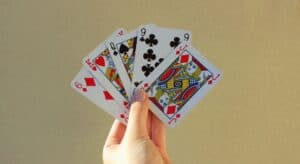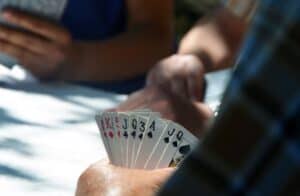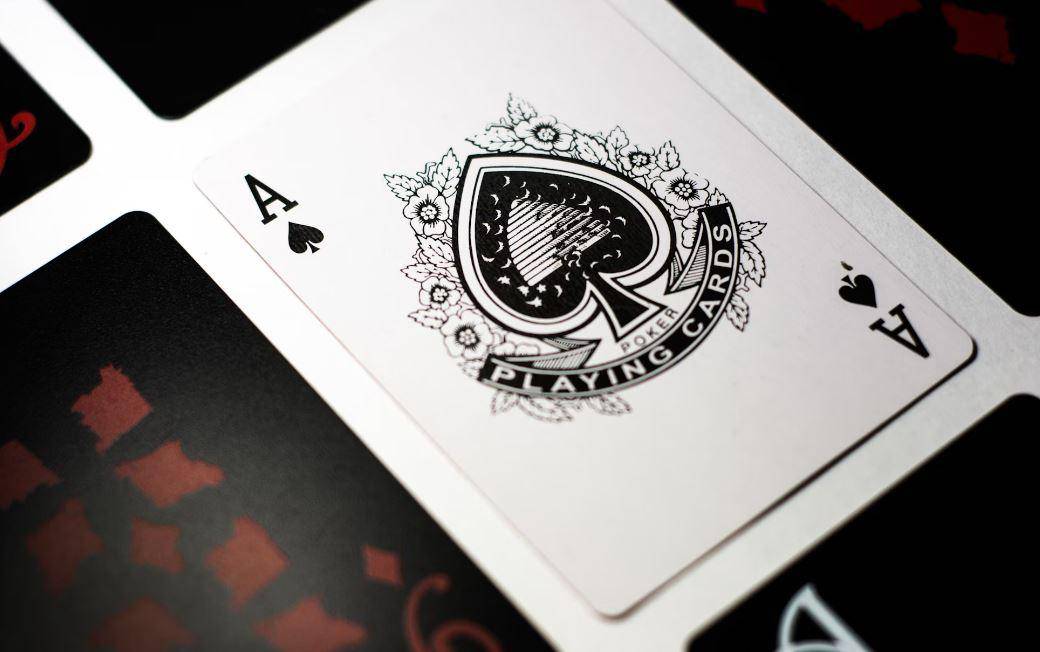Weak Aces: Navigating the Minefield at the Poker Table
In the game of poker, few hands are as simultaneously enticing and treacherous as a weak ace. From the moment it lands in your hand, a sense of potential victory tingles in the air, only to be tempered by the lurking threat of disaster. Weak aces, often referred to as “ace-rag” hands, can be both a blessing and a curse, offering the allure of dominance while concealing the potential for vulnerability.
The allure of holding an ace is undeniable. After all, it’s the highest-ranking card in the deck and holds the promise of superiority over your opponents. However, the strength of an ace diminishes significantly when paired with a low kicker. Ace-rag hands such as Ace-2 through Ace-5 may seem appealing at first glance, but they can quickly turn into liabilities if not played carefully.
The danger of weak aces lies in their susceptibility to domination. While they may occasionally win small pots against weaker holdings, they are easily dominated by stronger hands. A hand like Ace-5, for example, is dominated by any higher ace, leaving the player vulnerable to being out-kicked if an ace hits the board.
One of the biggest mistakes players make with weak aces is overvaluing them in early or middle positions. While it can be tempting to play these hands aggressively in an attempt to steal blinds or build a pot, doing so often leads to trouble. Weak aces perform best in late position, where there is a better chance of seeing how other players act before committing chips to the pot.
Another pitfall of weak aces is their tendency to trap players into difficult situations post-flop. When an ace hits the board, players holding weak aces may find themselves in a precarious position, unsure whether their top pair is strong enough to continue betting or whether they are simply walking into a trap set by an opponent holding a stronger hand.
To navigate the minefield of weak aces effectively, players must exercise caution and discretion. Rather than relying solely on the strength of their ace, they should consider the strength of their kicker and the likelihood of being dominated by other players’ holdings. In many cases, it may be wiser to fold weak aces pre-flop rather than risk getting ensnared in a costly confrontation.
However, weak aces are not entirely without merit. When played judiciously, they can serve as valuable weapons in a player’s arsenal, capable of winning pots and keeping opponents guessing. By mixing up their play and occasionally bluffing with weak aces, players can maintain an air of unpredictability that makes them difficult to read at the table.
Weak aces are a double-edged sword in the game of poker. While they hold the potential for triumph, they also carry the risk of defeat. To wield them effectively, players must exercise caution, discretion, and a healthy dose of strategic thinking. By doing so, they can navigate the minefield of weak aces and emerge victorious at the poker table.

Mastering Pai Gow Poker: A Relaxed and Strategic Casino Game
Mastering Pai Gow Poker: A Relaxed and Strategic Casino Game If you’re seeking a slower-paced casino game than Craps or Blackjack and wish to spend more time gambling without significant financial risk, Pai Gow Poker might be the perfect fit. With its blend of traditional poker rules and unique twists, this game offers a relaxed

Slot Review | Kong Wonder Wilds by Inspired Gaming Slot Review
Slot Review | Kong Wonder Wilds by Inspired Gaming Slot Review Get ready to embark on a wild adventure deep into the heart of the jungle with Inspired Gaming’s latest slot release, Kong Wonder Wilds. This thrilling slot game takes you on a journey through the untamed jungle where you’ll encounter exciting bonus features and

Stock Market Live: New Live Game Review by Evolution Gaming
Stock Market Live: Game Review for New Game by Evolution Gaming Experience the thrill of the stock market in real-time with the new live dealer stock trading game Stock Market Live by Evolution Gaming. A live csino game available at Bally Casino in the UK. This innovative game brings the excitement of trading to your fingertips, offering players

Gold Collector Hyper Hold™: Game Review All41 Studios and Microgaming
Gold Collector Hyper Hold™: Game Review All41 Studios and Microgaming “Gold Collector Hyper Hold™” is a thrilling new slot game developed by Microgaming in collaboration with All41 Studios. Set in a world of treasure and adventure, this game invites players to embark on a quest for gold with its exciting features and immersive gameplay. Game

Links of Ra 2: Pyramids of Fortune | Unveiling the Ultra Link & Win
Links of Ra 2: Pyramids of Fortune | Unveiling the Ultra Link & Win “Links of Ra II: Ultra Link & Win” takes players back into the mysterious world of ancient pyramids, offering an exhilarating gaming experience filled with excitement and opportunities to win big. With a bet range from 20p to £5.00 and 40

Embark on a Thrilling Adventure with Wolf Blaze WowPot Megaways
Embark on a Thrilling Adventure with Wolf Blaze WowPot Megaways Step into the wilderness of the Mid West and prepare for an exhilarating journey where fortunes await in the warm shadows of the mountains. Wolf Blaze WowPot Megaways is a classic wolf-themed game that promises an exciting player experience, featuring popular features and the massive win potential

The Level Playing Field: Exploring Suit Equality in Poker
The Level Playing Field: Exploring Suit Equality in Poker In the world of poker, where every card counts and every decision matters, understanding the hierarchy of suits is essential. Unlike some other card games like contract bridge or ninety-nine, where the suit of a card can significantly impact gameplay, poker operates under a different principle:

Navigating the Poker Table: Understanding Positions
Navigating the Poker Table: Understanding Positions In the dynamic world of poker, where every hand presents a new challenge, your position at the table plays a crucial role in shaping your strategy. While you may occupy the same physical seat throughout the game, your relative position in terms of order of play changes with each
FAQ Weak Aces at Poker:
1. What are weak aces in poker?
Weak aces, also known as “ace-rag” hands, refer to hands containing an ace paired with a low-ranking card, typically ranging from 2 to 5.
2. How do weak aces compare to stronger ace hands?
Weak aces are less desirable than stronger ace hands like Ace-King, Ace-Queen, or even Ace-Jack because they are more susceptible to domination by higher kickers.
3. Are weak aces playable in all positions?
No, weak aces are generally best played cautiously and selectively, particularly in late position where there is more information about opponents’ actions.
4. What are the risks of playing weak aces aggressively?
Aggressive play with weak aces, especially in early or middle position, can lead to being dominated by stronger hands and getting trapped in difficult post-flop situations.
5. How should weak aces be approached pre-flop?
Players should exercise caution when deciding whether to play weak aces pre-flop, considering factors like position, table dynamics, and stack sizes before making a decision.
6. What should I do if I flop top pair with a weak ace?
If you flop top pair with a weak ace, evaluate the strength of your kicker and consider the likelihood of being out-kicked by other players. Proceed with caution and be prepared to fold if facing significant resistance.
7. Is it ever appropriate to bluff with a weak ace?
Bluffing with a weak ace can be a strategic move to keep opponents guessing, but it should be done sparingly and with careful consideration of the table dynamics and opponents’ tendencies.
8. How can I avoid getting into trouble with weak aces?
To minimize the risk of trouble with weak aces, exercise discipline in hand selection, avoid overvaluing them, and be willing to fold if the situation warrants it.
9. What are some common mistakes to avoid when playing weak aces?
Common mistakes include overestimating the strength of a weak ace, playing them too aggressively from early positions, and failing to consider the potential for domination by higher kickers.
10. Are there situations where weak aces can be profitable?
Yes, weak aces can be profitable when played carefully in late position, in situations where opponents are likely to fold to aggression, or when used selectively as part of a balanced bluffing strategy.






